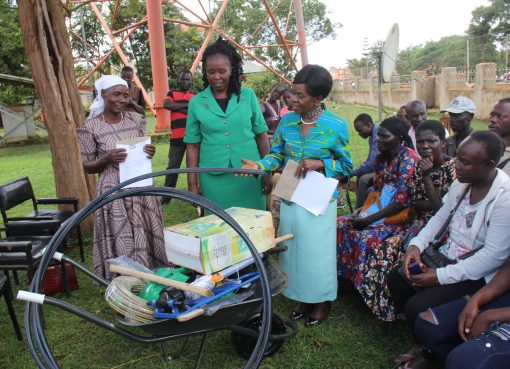

The government will launch new Competence Based Curriculum in Technical and Vocational Education and Training Institutions (TVETs) in January next year.
The State Department for Vocational and Technical Training Principal Secretary (PS), Kevit Desai further stated that the Government has embraced the dual training system that contains extended and mandatory industrial training to mould a more skilled work force.
Speaking at Njoro Boys Secondary School on Wednesday in Nakuru, when he supervised distribution of Kenya Certificate of Secondary Education (KCSE) examination material, Desai said mismatch between training outcomes and market demands had denied many graduates job opportunities.
Reforms in TVET training were also targeting to broaden the uptake of TVET courses among the youth and increase Kenya’s annual enrolment rate to over 1 million students through equipping and refurbishing existing vocational institutions and constructing new ones in every constituency.
The PS who was accompanied by County Commissioner (CC), Joshua Nkanatha and County Director of Education, Isaac Atebe, disapproved the low number of students enrolling in Technical and Vocational institutions.
“Developed economies have a minimum of 10 percent of their populations in Technical institutions. We have only managed 0.3 percent. A World Bank supported study shows that East Asian countries such as China, South Korea and Malaysia all achieved their industrialisation because they invested heavily in vocational training, attaining a 50 per cent enrolment compared to other disciplines” he said.
The new system will also see all Technical Vocational Education and Training (TVET) students attached to industries for mandatory internships that will be scored to form part of the overall grading.
This means that those enrolled for a three-year diploma programme will spend one-and-a-half years on industrial attachment.
By extending the practical attachment period from the usual three months at most, the plan will ensure that graduates from middle-level colleges have the requisite skills to increase their chances of securing jobs.
The Kenya Strategic Plan for 2014-2018 stresses that skills development among graduates can expand employment for youths and women.
The document states that the major challenges to youth employment in Kenya include lack of required skills and inadequate training for mid-level technicians and artisans.
Desai noted that Kenya had an estimated shortage of 30,000 engineers, 90,000 technicians and 400,000 artisans.
The growing gap of middle-level technicians and artisans, he warned was hampering the country’s economic growth.
“Kenya can achieve the same levels of development as these countries have if we draw significant lessons about how they moved. The government is committed to constructing more TVET colleges until there is one in every constituency”.
The reforms are also fashioned to equip students with entrepreneurial skills that will create more jobs and promote various aspects of development agenda particularly the BIG 4.
“We will be emphasizing on value addition and entrepreneurship. Studies have confirmed one entrepreneur at middle level sectors employs between 5 to 22 persons. TVET structures have been reformed to promote capacity for self-employment” noted the PS.
By Anne Mwale



